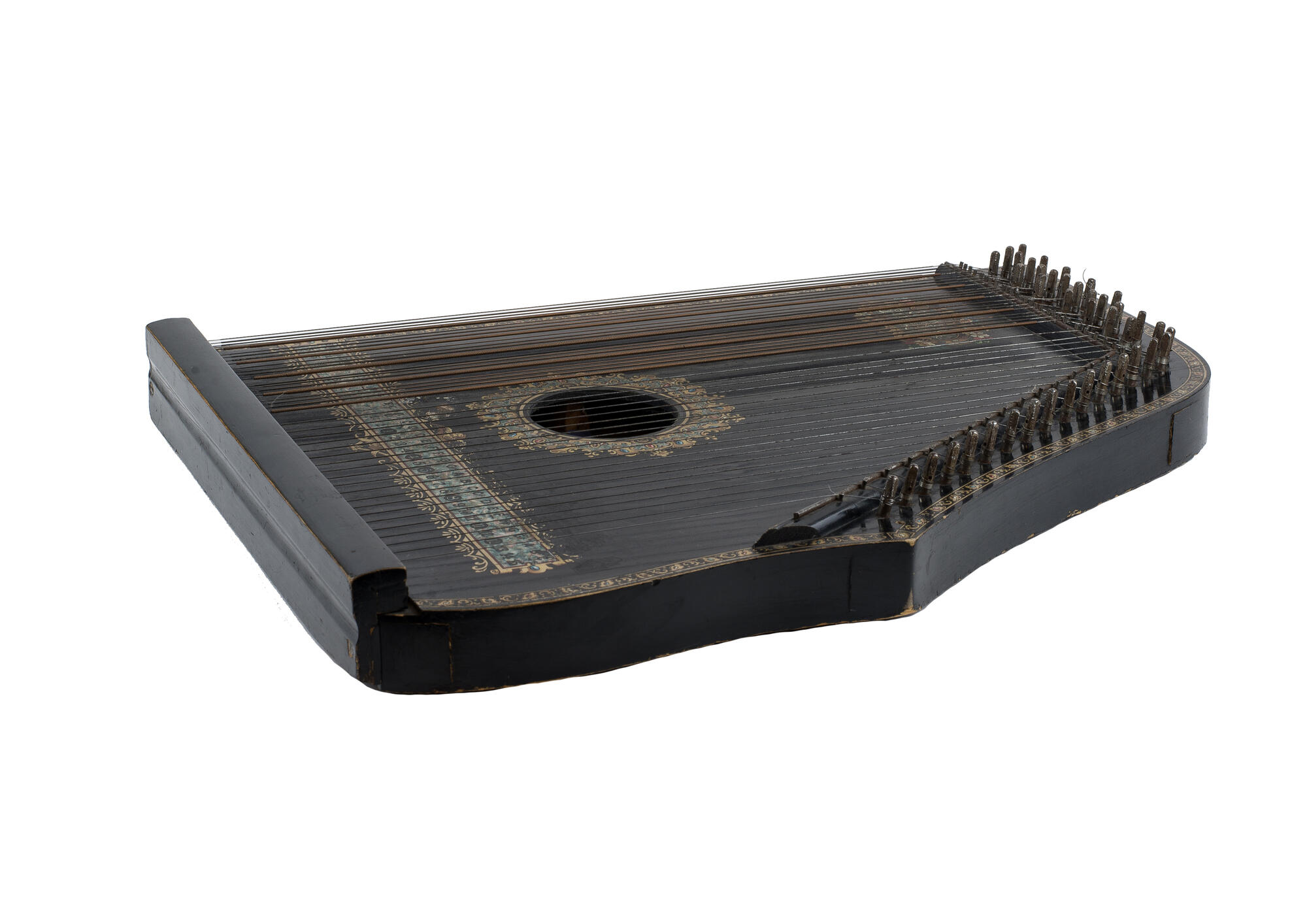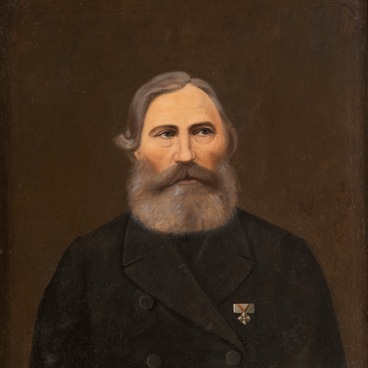The collection of the museum houses a zither — a stringed plucked musical instrument. Similar instruments have been known since ancient times and were used by many peoples of China and the Middle East. In European countries, especially in Austria and Germany, zithers became popular in the 18th — 20th centuries.
In a broad sense, zithers included all chordophones, instruments that consisted of a resonator case and strings stretched on it. They could include percussion instruments, such as cymbal, bowed instruments, such as the Icelandic fiddle, and plucked instruments, such as gusli, kantele, kanun and zither from the museum’s collection.
The flat resonator case of such instruments was made of wood. It could be in the form of a rectangle, triangle, trapezium, wing and other types. They strung from 17 to 45 strings on the case, depending on the size of a zither.
The instrument housed in the museum, was made around the first quarter of the 19th century. At that time, it was just starting to be fashionable. At first, such instruments were better known in the countryside, and in the early 19th century they appeared in the mansions of aristocrats and in the houses of city dwellers.
The instrument belongs to the “alpine zither” type because of its asymmetrical shape. It was intended for salon music.
Along with the instrument, a museum legend has also survived:
In a broad sense, zithers included all chordophones, instruments that consisted of a resonator case and strings stretched on it. They could include percussion instruments, such as cymbal, bowed instruments, such as the Icelandic fiddle, and plucked instruments, such as gusli, kantele, kanun and zither from the museum’s collection.
The flat resonator case of such instruments was made of wood. It could be in the form of a rectangle, triangle, trapezium, wing and other types. They strung from 17 to 45 strings on the case, depending on the size of a zither.
The instrument housed in the museum, was made around the first quarter of the 19th century. At that time, it was just starting to be fashionable. At first, such instruments were better known in the countryside, and in the early 19th century they appeared in the mansions of aristocrats and in the houses of city dwellers.
The instrument belongs to the “alpine zither” type because of its asymmetrical shape. It was intended for salon music.
Along with the instrument, a museum legend has also survived:



